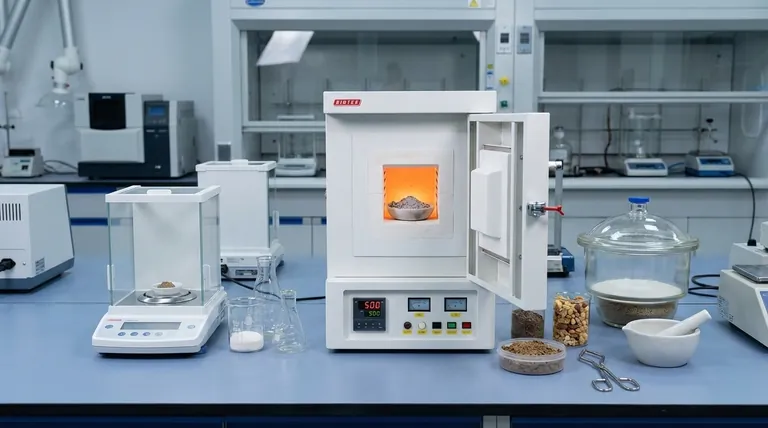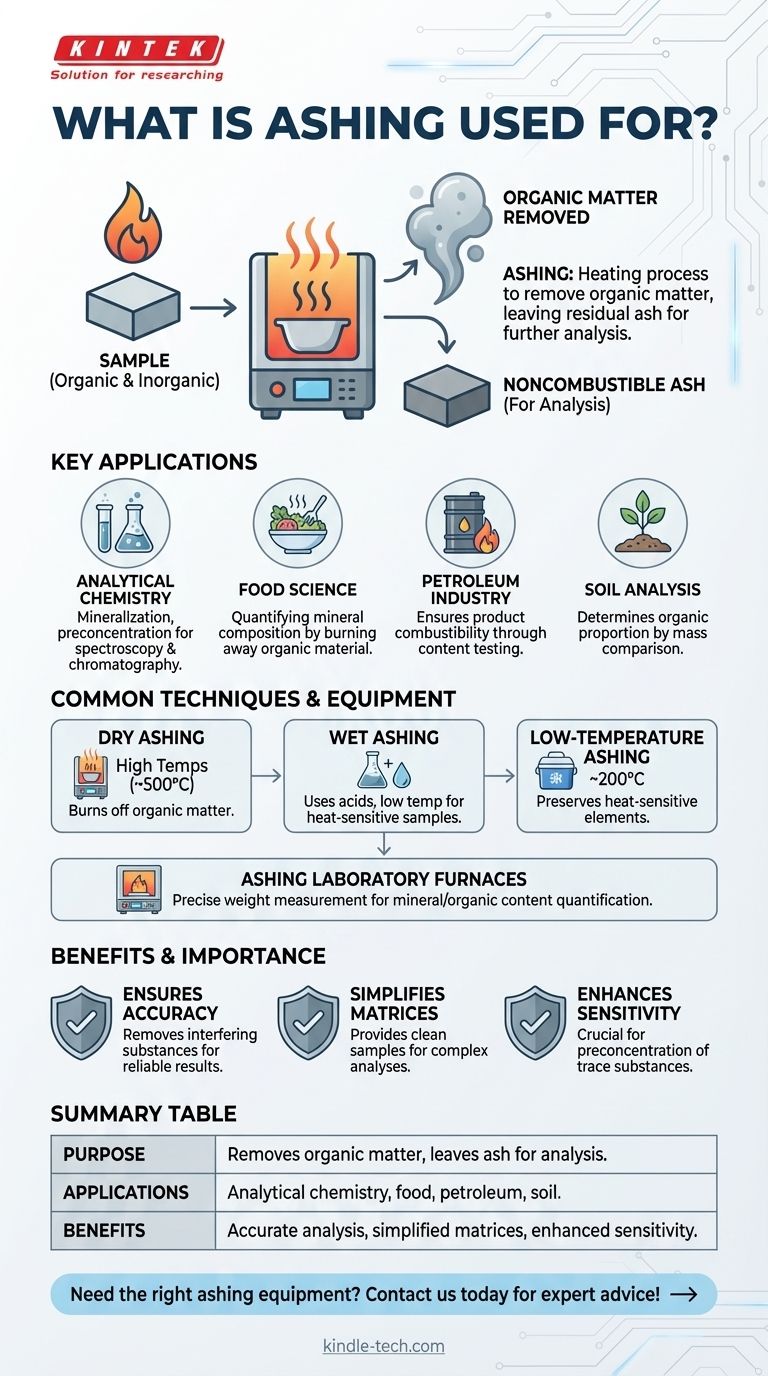Озоление — это критически важный процесс, используемый в различных отраслях промышленности и научных областях для удаления органических веществ и других мешающих компонентов из образцов, оставляя несгораемую золу для дальнейшего анализа. Он широко применяется в аналитической химии, пищевой промышленности, испытаниях нефтепродуктов и анализе почвы. В зависимости от типа образца и аналитических требований используются такие методы, как сухое озоление, мокрое озоление и низкотемпературное озоление. Озоление помогает количественно определить минеральный состав, обеспечить горючесть продукта и подготовить образцы для таких методов, как спектроскопия и хроматография. Оно также необходимо для предварительного концентрирования следовых веществ и определения органических пропорций в таких материалах, как почва.

Объяснение ключевых моментов:
-
Определение и назначение озоления
- Озоление — это процесс, который включает нагревание образца для удаления органических веществ и других мешающих компонентов матрицы, оставляя несгораемую золу.
- В основном он используется для подготовки образцов к точному анализу путем устранения компонентов, которые могут мешать измерениям.
-
Применение озоления
- Аналитическая химия: Озоление используется для минерализации и предварительного концентрирования следовых веществ перед химическим или оптическим анализом, таким как хроматография или спектроскопия.
- Пищевая промышленность: Оно помогает количественно определить минеральный состав пищевых образцов путем сжигания органических материалов.
- Нефтяная промышленность: Озоление обеспечивает горючесть нефтепродуктов путем проверки их содержимого.
- Анализ почвы: Оно определяет органическую долю почвы путем сравнения массы до и после озоления.
-
Распространенные методы озоления
- Сухое озоление: Включает нагревание образцов при высоких температурах (около 500°C) для сжигания органических веществ.
- Мокрое озоление: Использует кислоты вместо высоких температур для удаления органических компонентов, подходит для термочувствительных образцов.
- Низкотемпературное озоление: Проводится при более низких температурах (около 200°C) для сохранения термочувствительных элементов.
- Сульфатное озоление: Нейтрализует и удаляет диоксид серы из образцов.
- Озоление в закрытой системе: Использует герметичные камеры для контроля атмосферы во время процесса, обеспечивая точность.
-
Роль в атомно-абсорбционной спектрометрии с графитовой печью (АА)
- Озоление является важным этапом в программах АА с графитовой печью, где оно удаляет компоненты матрицы, которые могут мешать измерению аналита.
- Этот этап обеспечивает точные и надежные результаты элементного анализа.
-
Важность в подготовке образцов
- Озоление упрощает матрицы образцов, облегчая анализ остаточной золы на элементный состав.
- Особенно полезно для предварительного концентрирования следовых веществ, повышая чувствительность аналитических методов.
-
Оборудование, используемое при озолении
- Лабораторные муфельные печи для озоления: Предназначены для измерения изменений веса образцов по мере выгорания органических компонентов.
- Эти печи необходимы для отраслей, требующих точного количественного определения минерального или органического содержания.
-
Преимущества озоления
- Обеспечивает точный анализ путем удаления мешающих веществ.
- Предоставляет чистую матрицу образца для таких методов, как спектроскопия и хроматография.
- Помогает в количественном определении содержания минералов и органических пропорций в различных материалах.
Понимая эти ключевые моменты, покупатели оборудования и расходных материалов могут лучше оценить важность озоления в подготовке и анализе образцов, гарантируя выбор правильных инструментов и методов для своих конкретных потребностей.
Сводная таблица:
| Аспект | Подробности |
|---|---|
| Назначение | Удаляет органические вещества, оставляя несгораемую золу для анализа. |
| Применение | Аналитическая химия, пищевая промышленность, испытания нефтепродуктов, анализ почвы. |
| Методы | Сухое озоление, мокрое озоление, низкотемпературное озоление, сульфатное озоление. |
| Оборудование | Лабораторные муфельные печи для озоления для точного измерения веса. |
| Преимущества | Обеспечивает точный анализ, упрощает матрицы образцов, повышает чувствительность. |
Нужно подходящее оборудование для озоления для вашей лаборатории? Свяжитесь с нами сегодня для получения экспертной консультации и решений!
Визуальное руководство

Связанные товары
- Муфельная печь 1800℃ для лаборатории
- Муфельная печь 1700℃ для лаборатории
- Лабораторная муфельная печь с нижним подъемом
- Муфельная печь 1400℃ для лаборатории
- Печь-муфель с высокой температурой для обезжиривания и предварительного спекания в лаборатории
Люди также спрашивают
- Металл расширяется при нагревании или охлаждении? Объяснение науки о тепловом расширении
- Какова безопасность работы с теплом в лаборатории? Полное руководство по предотвращению ожогов и пожаров
- В чем разница между температурами плавления и спекания? Руководство по методам обработки материалов
- Какая температура необходима для литья металла? Достигайте идеальных отливок с правильным перегревом
- При нагревании металлического кольца оно расширяется или сжимается? Отверстие становится больше, а не меньше



















